This article was co-authored by Laura Marusinec, MD. Dr. Marusinec is a board certified Pediatrician at the Children's Hospital of Wisconsin, where she is on the Clinical Practice Council. She received her M.D. from the Medical College of Wisconsin School of Medicine in 1995 and completed her residency at the Medical College of Wisconsin in Pediatrics in 1998. She is a member of the American Medical Writers Association and the Society for Pediatric Urgent Care.
There are 23 references cited in this article, which can be found at the bottom of the page.
wikiHow marks an article as reader-approved once it receives enough positive feedback. This article received 23 testimonials and 80% of readers who voted found it helpful, earning it our reader-approved status.
This article has been viewed 301,829 times.
Bones aren’t just the dry, hard pieces that you see in a Biology class or in Halloween decorations. They’re actually made of living tissue that is constantly being repaired and rebuilt from the natural wear and tear of daily life. As you get older, your bones start to deteriorate quicker than they can be repaired, which causes them to be less dense and easier to break. Fortunately, there are things you can do to help increase the density of your bones and keep them healthy so they can continue to support you.
Steps
Following a Bone-Healthy Diet
-
1Make sure you’re getting plenty of calcium to keep your bones strong. Calcium is the single most abundant mineral in your body, and about 99% of it is found in your bones and teeth. Getting sufficient calcium will help you grow healthy bones and maintain bone density. Focus on eating foods that contain lots of calcium to maintain bone density. The recommended daily intake of calcium varies depending on your age and sex.[1]
- Adult men under 70 and women under 50 should get at least 1,000mg of calcium per day. Men over 70 and women over 50 should get at least 1,200mg per day. Pregnant or lactating women should consume at least 1,300mg of calcium daily.
- Many dairy products such as milk, cheese, and yogurt, are very rich sources of calcium.[2]
- If you choose soy milk, almond milk, or other dairy substitutes, look for ones that have been fortified with calcium.
- Vegetable sources rich in calcium include turnips and collard greens, bok choi, black-eyed peas, kale, and broccoli.[3]
- Sardines and salmon are also excellent sources of calcium and omega-3 fatty acids, which are vital for brain health. In addition, they contain vitamin D, which helps your body absorb calcium.
- Choose whole-grain breakfast cereals that have been fortified with calcium and other nutrients and are low in sugar. Because many people eat these cereals daily with milk, they’re a good, consistent source of calcium.
- Calcium is also available in dietary supplements. The two main forms are calcium carbonate and calcium citrate. But don’t take calcium supplements without first talking to your doctor because too much calcium can have unpleasant side effects, including the possibility of kidney stones.[4]
-
2Add vitamin D rich foods to your diet to help your body absorb calcium. Vitamin D helps improve your body’s ability to absorb calcium. It's also a crucial component in bone rebuilding. People under the age of 70 should get at least 600IU of vitamin D daily; people over 70 should get at least 800IU daily. Make sure you’re adding foods that contain vitamin D to your diet to help with calcium absorption so you can build strong and healthy bones.[5]
- Fatty fish, such as swordfish, salmon, tuna, and mackerel are the best sources of natural vitamin D.
- Beef liver, cheese, some mushrooms, and egg yolks contain small amounts of vitamin D.[6]
- Milk is commonly fortified with vitamins A and D. Many beverages and cereals are also enriched with vitamin D.
- Spending time in the sunshine is another great way to get vitamin D. Ultraviolet rays trigger vitamin D synthesis in your body, but people who have darker skin produce less vitamin D this way. Use a sunscreen with a broad-spectrum SPF of at least 15 whenever you spend time outside.[7]
- Vitamin D is also available as a dietary supplement, but talk to your doctor before you take any supplements to make sure they’re safe for you.
Advertisement -
3Help your bones repair themselves by eating enough magnesium. Magnesium is an important mineral for every part of your body and plays a key role in new bone formation. Eating foods rich in magnesium will make sure that you have enough and will help keep yoru bones dense and strong. Adult men should get at least 400-420 mg per day, and adult women should get at least 310-320 mg per day.[8] Rich sources of dietary magnesium include:
- Almonds, cashews, peanuts, and peanut butter
- Green leafy vegetables like spinach
- Whole grains and legumes, especially black beans and soybeans
- Avocados, potatoes with their skins, and bananas
Note: Magnesium competes with calcium for absorption. If you have low calcium levels, magnesium may cause a calcium deficiency. However, if you get enough calcium in your diet, you probably don’t have to worry about these effects.
-
4Reduce bone loss and fractures by eating foods rich in B vitamins. A vitamin B12 deficiency may reduce your number of osteoblasts, cells that are responsible for forming new bone. People with vitamin B12 deficiencies are more likely to suffer bone fractures and more rapid bone loss. Fortunately, you can keep your bones strong and healthy by adding foods with vitamin B to your diet. Good dietary sources of Vitamin B12 include:[9]
- Organ meats, such as liver and kidney
- Beef and other red meats such as venison
- Shellfish, especially clams and oysters
- Fish, fortified cereals, and dairy products
- B12 can also be taken as a nutritional supplement as a capsule or sublingual liquid, which makes it easier for vegetarians and vegans to get enough of it.[10]
-
5Consume between 75-90 mg of vitamin C a day. Vitamin C stimulates procollagen and enhances collagen synthesis, which helps your body build bone. Getting enough vitamin C in your diet can increase your bone mineral density, especially if you’re a postmenopausal woman. Adult men should get at least 90mg of vitamin C per day, and adult women should get at least 75mg per day. Good dietary sources of vitamin C include:[11] [12]
- Citrus fruits and juices, red and green peppers, tomatoes, kiwifruit, strawberries, cantaloupe, and Brussels sprouts
- Cabbage, cauliflower, potatoes, spinach, and peas
- Fortified cereals and other products
- Most people get enough vitamin C through foods. However, if you need more vitamin C, you can take supplements in the form of a pill or as a powder that can be added to water.
-
6Get between 90-120 mcg of vitamin K a day. Vitamin K increases bone density and may even reduce your risk of fractures. Adult men should get at least 120 mcg per day, and adult women should get at least 90mcg per day. Vitamin K is found in many foods, but good sources include:[13] [14]
- Green leafy vegetables such as spinach, kale, broccoli, and collard and turnip greens
- Vegetable oils, especially soybean oil, and nuts
- Fruits such as berries, grapes, and figs
- Fermented foods and cheese
-
7Avoid taking vitamin E supplements. Vitamin E is an antioxidant and an important part of a healthy, balanced diet. However, you should be careful about vitamin E supplements; these usually provide more than 100IU per dose, far more than the recommended daily intake of 15mg/22.4IU per day. Consuming too much vitamin E may decrease bone mass and reduce new bone formation.[15]
- Getting sufficient vitamin E from dietary sources is unlikely to pose a threat to your bones, and can provide many health benefits.
- Good dietary sources of vitamin E include seeds, nuts, plant oils, spinach, broccoli, kiwifruit, mango, tomato, and spinach.[16]
-
8Limit the amount of caffeine and alcohol that you consume. Caffeine and alcohol may affect how your body forms new bone and both disrupt the quality of your sleep, which is important for regulating bone mass and density. Avoid drinking too much caffeine or alcohol to help improve the health of your bones and increase their density.[17]
- If you do decide to drink alcohol, drink in moderation and avoid drinking more than 3 drinks in a 24 hour period.[18]
Making Smart Lifestyle Choices
-
1Get 30 minutes of aerobic exercise a day to improve bone health. Regular aerobic exercise will help you increase and maintain your bone density while also improving your overall health. Try to get at least half an hour of exercise each day to keep your bones healthy and to minimize bone loss.[19]
- Use cardio exercises like running, swimming, an cycling to work your muscles and build up your bones.
- Mix up your routine with exercises like brisk walking, hiking, tennis, or even dancing.
-
2Build up your bones by doing weight lifting exercises. Both aerobic and weight lifting exercises are good for you bone health, but resistance training, or weight lifting, can build up your bone mass and muscles in site specific locations. For example, you can use squats to build up the bone density in your legs. Do 2-3 weight lifting workouts a week to help build up your bone density.[20]
- Weight lifting also builds up your muscles, which help keep your bones in place and maintain bone density.
- Weight training, elastic exercise bands, and exercises that use your own body weight like pushups are excellent for strengthening.
- Yoga and Pilates can also improve strength and flexibility. However, people who already have osteoporosis should not do certain positions, as it may increase the risk of bone fracture or breakage.
- If you’re concerned about your risk factors, consult with your doctor or a physical therapist to see what exercises will be best for you.
-
3Use plyometric movements to help increase bone density. Plyometrics are exercises that involve a lot of jumping around, and the impact helps your body build denser, stronger bones. When you’re planning your workout routine, add a few plyometric exercises to build up the density of your bones.[21]
- Skipping rope is a great way to burn calories and strengthen your bones.
- You could also try jumping jacks, or using a trampoline.
Warning: Jumping is not recommended for people who already have osteoporosis, as this could lead to falls or bone breakage. It would also not be recommended for people with hip or leg problems or certain other medical conditions. Talk to your doctor if you aren't sure if you should be jumping.
-
4Quit smoking to keep your bones strong. Smoking is associated with a higher risk of bone disease including osteoporosis. Smoking also affects how the density of your bones, so quitting can help improve your bone health. If you’re around others who smoke, try to avoid breathing in the secondhand smoke.[22]
- If you smoke, quitting quickly decreases your risk for many diseases.[23] The longer you smoke, the higher your risk is of low bone density and fractures.
- Secondhand smoke exposure during youth and early adulthood may increase your risk of developing low bone mass later.[24]
- Smoking also reduces the production of estrogen in women, which can also lead to weaker bones.
-
5Talk to your doctor if you have bone pain that won’t go away. If diet and exercise don’t appear to be improving your bone health, make an appointment to see your doctor. They can test to see if you have an underlying medical condition and can recommend treatment options and prescribe medications to help improve your bone density.[25]
- Estrogens and progestins help maintain bone density in both men and women. The aging process decreases the amount of these hormones your body produces. Hormone supplements including estrogen products may reduce your risk of developing osteoporosis.
- Medications that can help treat or prevent osteoporosis include ibandronate, alendronate, risedronate sodium, and zoledronic acid.
References
- ↑ http://ods.od.nih.gov/factsheets/Calcium-HealthProfessional/
- ↑ http://ods.od.nih.gov/factsheets/Calcium-HealthProfessional/
- ↑ http://www.hsph.harvard.edu/nutritionsource/calcium-sources/
- ↑ http://www.ncbi.nlm.nih.gov/pubmedhealth/PMH0072714/
- ↑ https://pubmed.ncbi.nlm.nih.gov/22716179/
- ↑ http://ods.od.nih.gov/factsheets/VitaminD-HealthProfessional/
- ↑ http://www.cdc.gov/cancer/skin/basic_info/sun-safety.htm
- ↑ https://pubmed.ncbi.nlm.nih.gov/31175968/
- ↑ https://pubmed.ncbi.nlm.nih.gov/26017584/
- ↑ http://ods.od.nih.gov/factsheets/VitaminB12-HealthProfessional/
- ↑ http://www.ncbi.nlm.nih.gov/pubmed/11149477
- ↑ http://www.ncbi.nlm.nih.gov/pubmed/21967159
- ↑ http://www.ncbi.nlm.nih.gov/pubmed/11684396
- ↑ http://www.ncbi.nlm.nih.gov/pubmed/21967159
- ↑ http://www.ncbi.nlm.nih.gov/pubmed/22308007
- ↑ http://ods.od.nih.gov/factsheets/VitaminE-HealthProfessional/
- ↑ https://pubmed.ncbi.nlm.nih.gov/29229227/
- ↑ http://www.niaaa.nih.gov/alcohol-health/overview-alcohol-consumption/moderate-binge-drinking
- ↑ https://pubmed.ncbi.nlm.nih.gov/30671455/
- ↑ https://pubmed.ncbi.nlm.nih.gov/9927006/
- ↑ https://pubmed.ncbi.nlm.nih.gov/28101776/
- ↑ https://pubmed.ncbi.nlm.nih.gov/30143235/
- ↑ http://www.cdc.gov/tobacco/data_statistics/fact_sheets/cessation/quitting/
- ↑ http://www.niams.nih.gov/health_info/bone/Osteoporosis/conditions_Behaviors/bone_smoking.asp
- ↑ https://pubmed.ncbi.nlm.nih.gov/9431639/
About This Article
To increase bone density, add more calcium to your diet by eating dairy products like yogurt, cheese, and cow's milk. Additionally, increase your magnesium levels by including almonds, spinach, and avocados in your diet. You should also get plenty of vitamin D through fortified milk or 5-10 minutes of sun exposure a day, which will help your body absorb more calcium. Along with dietary changes, aim for 30 minutes of weight-bearing exercises each day to build bone mass. If you'd like to maintain bone density, try muscle strengthening exercises, like yoga or Pilates. To learn how to use jumping to increase your bone density, keep reading!
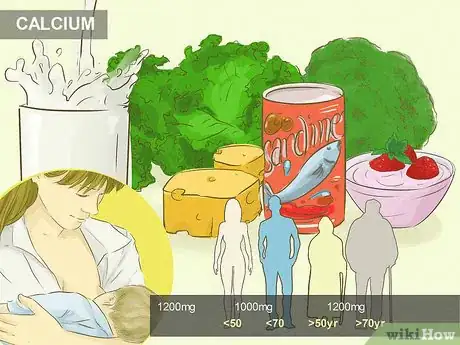
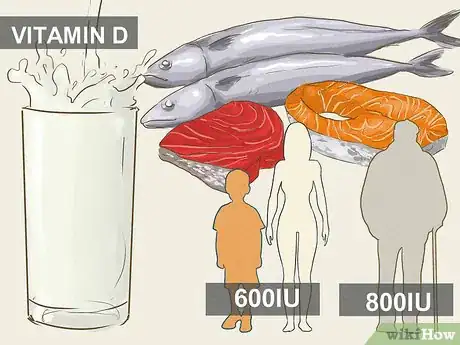
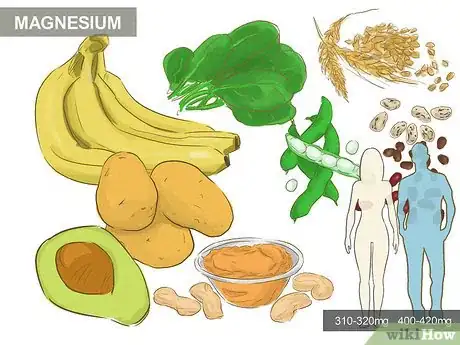
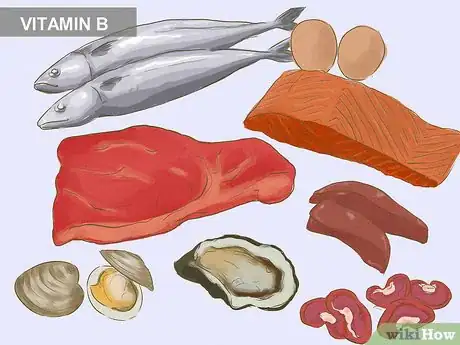
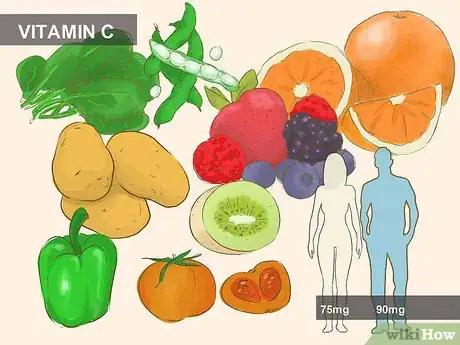
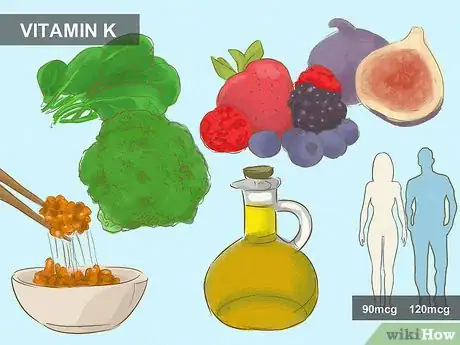
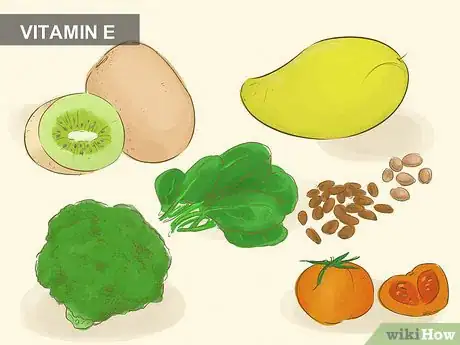
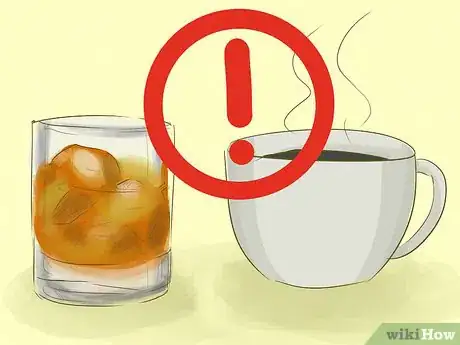
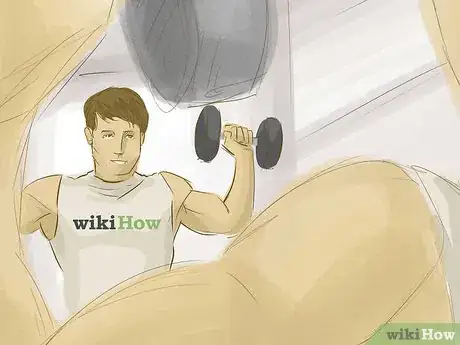
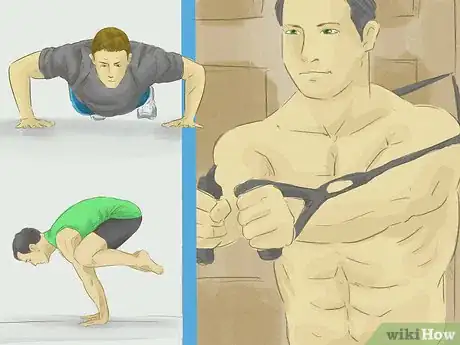

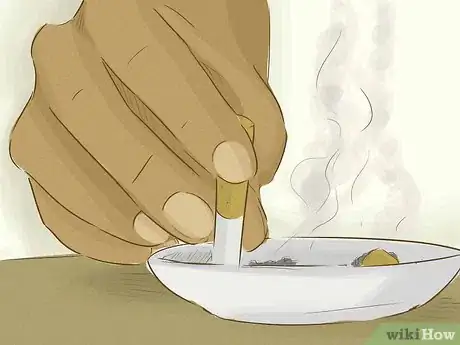
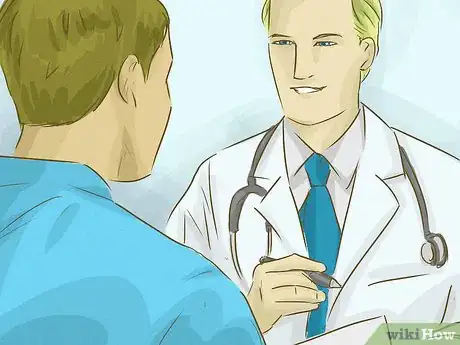
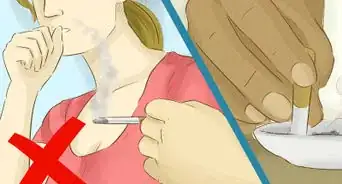

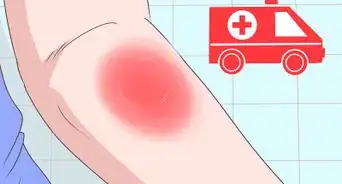
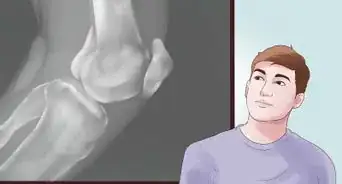
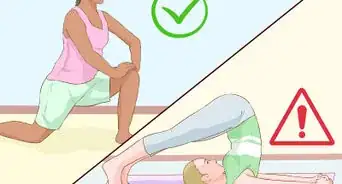
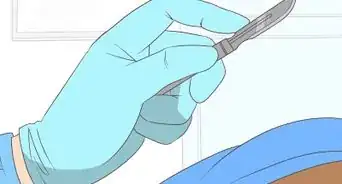
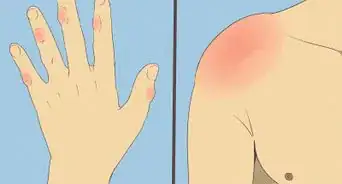

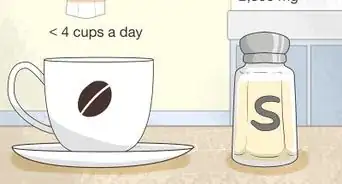
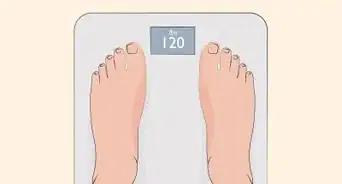

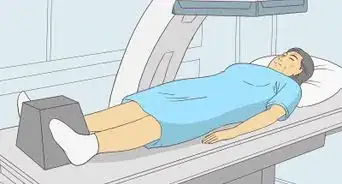











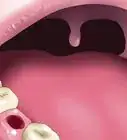

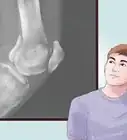



































Medical Disclaimer
The content of this article is not intended to be a substitute for professional medical advice, examination, diagnosis, or treatment. You should always contact your doctor or other qualified healthcare professional before starting, changing, or stopping any kind of health treatment.
Read More...